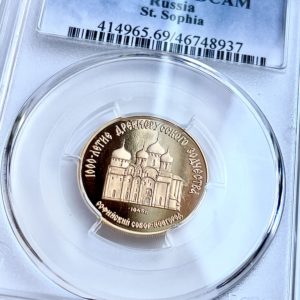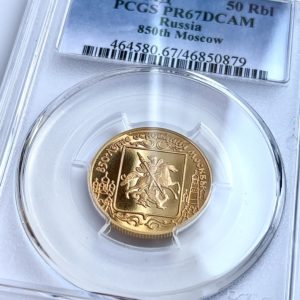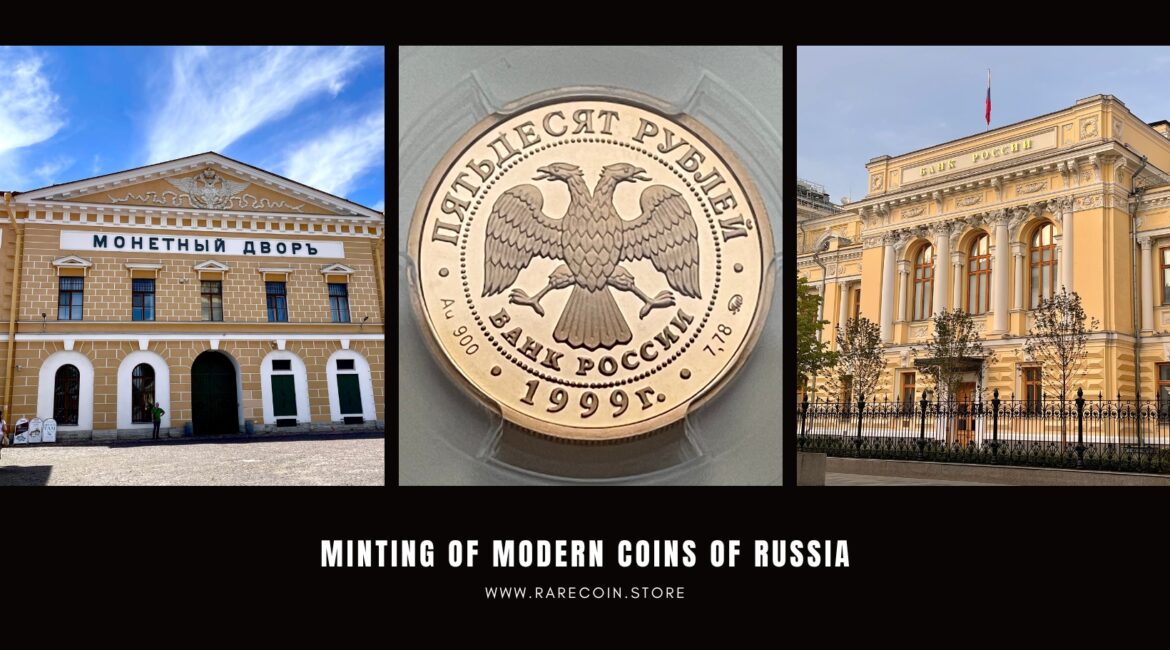The era of modern commemorative and bullion coins in Russia
The modern era of commemorative and bullion coins in Russia began in 1975 in the USSR with the resumption of minting of the aforementioned chervonets “sower”, albeit with updated years of minting that corresponded to the time of manufacture. This era continues to this day in Russia. Gold coins minted during this period were never used at face value in circulation. They are intended exclusively for sale on the numismatic market to collectors and investors and are often offered in special protective packaging to protect against mechanical damage and improper storage, such as in plastic capsules or dust jackets.
Earlier Soviet editions before 1991 were sold mainly abroad, while later editions of the Russian Federation from 1992 to the present day are widely distributed in the domestic market. Coinage with higher editions, which are not usually associated with special events or anniversaries, are often referred to as bullion coins. Examples include the Soviet chervonets coins of 1975-1982 and the Russian 50-ruble coins “Pobedonosets“, produced since 2006. Issues dedicated to a particular event or anniversary are often referred to as commemorative or commemorative coins. These are usually produced in smaller quantities and are often available in a special polished “proof” design.
Some coins from this period are particularly rare and sought after, while most coins are valued primarily for their pure metal weight.
Numismatic coins and bullion coins from Russia
Russian gold coins can be roughly divided into two main groups, which are due to their relative rarity and thus also influence the purchase price.
The first group includes rather rare coins, which, in addition to their metal value, also have a numismatic value.
The second group consists of editions that are quite common in today’s numismatic market and can be considered “capital expenditures” regardless of their minting date. Many 5 and 10 ruble coins from the time of Nicholas II can be considered investment coins due to their frequency.
The price of investment coins/bullion coins is mainly determined by their metal content, while rare coins can be influenced by both their rarity and grade. You may be interested in: Differences between collector coins and bullion coins
The path of coinage: tradition and modernity
Coinage has undergone a variety of changes over time, from manual labor to fully automated mass production.
Modern coinage is a technically advanced and automated high-tech production. In Russia, most coin products are produced on embossing presses using the process of cold volumetric minting. This process makes it possible to produce metal products with complex shapes and patterns by plastically deforming the metal in the cold state using special tools.
Cold stamping offers several advantages compared to hot forging or machining. The surface roughness of the coins is lower, oxidation and scale formation do not occur, and the metal does not need to be heated, resulting in more precise dimensions.
Modern technologies such as patination, gilding, silver plating, blackening, vacuum coating, sandblasting and clarifying make it possible to realize artists’ ideas and produce high-quality coins. In addition, the latest equipment of Russian mints allows the application of silver and gold coatings, as well as the combination of various metals and alloys, including precious metals.
Russian mints produce high-quality commemorative and bullion coins, often in the “proof” quality, which create a mirror image and a matte image. Proof quality coins are carefully packaged to prevent surface damage. Another quality variant is “Reverse-Proof”, in which the field has a matte surface and the relief is mirrored. You may also be interested in: Proof coins vs. bullion coins: Which is better than investing in gold coins?
Who is the issuer of commemorative and bullion coins of Russia?
Bank Rossii, whose image can be seen on the coins, is the central issuing center for commemorative and investment coins in Russia. As the country’s main emissions and currency regulator, it works closely with the government to develop and implement a unified state monetary policy. The Central Bank of the Russian Federation issues commemorative and investment coins made of precious and non-precious metals, which are distributed both domestically and abroad. This activity began in 1992 and continued the tradition of issuing commemorative and bullion coins, which was previously carried out by the State Bank of the USSR in 1965-1991.
The production of the coins of the Bank of Russia takes place in the mints of Moscow and St. Petersburg, which are known for their artistic design and minting quality. These coins are recognized both at home and abroad and have been regularly awarded prizes due to their high quality and popularity.
Stages of development of the Central Bank of Russia
1769-1818: State Allocation Bank
1818-1860: State Commercial Bank of the Russian Empire
1860-1917: State Bank of the Russian Empire
1917-1922: People’s Bank of the RSFSR
1922-1991: State Bank of the USSR
1991 – present: Central Bank of the Russian Federation
Where does the production of the coins of the Bank of Russia take place?
The production of the coins of the Bank of Russia takes place in the mints of Moscow and St. Petersburg. These coins are characterized by outstanding artistic design and first-class minting quality. They enjoy great recognition both in Russia and abroad and are repeatedly honored with awards based on survey results from well-known foreign numismatic publications and organizations.
Discover our interesting gold coins from Russia here:
-

50 Rubles 1988 – St. Sophia Cathedral in Novgorod – PCGS PR69 DCAM
950,00 €plus shippingDelivery Time: approx. 2-3 days (excluding Saturdays, Sundays and public holidays) -

50 rubles 1997 – 850 years of Moscow – PCGS PR69 DCAM
950,00 €plus shippingDelivery Time: approx. 2-3 days (excluding Saturdays, Sundays and public holidays)





